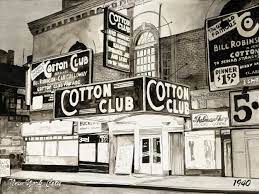
Exploring Cannabis Use During the Harlem Renaissance: A Cultural and Historical
Share
The Harlem Renaissance, a vibrant cultural and artistic movement that flourished in the 1920s and 1930s, is celebrated for its groundbreaking contributions to literature, music, and art. Among the many aspects of this transformative period, cannabis use emerged as a notable feature, providing insight into the social dynamics, creative inspiration, and experimentation of the time. In this blog post, we'll delve into the role of cannabis during the Harlem Renaissance, exploring its cultural significance and impact on artistic expression.
Cultural Context of Cannabis Use: During the Harlem Renaissance, cannabis—referred to colloquially as "reefer," "muggles," or "gage"—became increasingly popular among African American communities in Harlem and beyond. This coincided with broader shifts in attitudes towards drugs and intoxicants, as jazz music, speakeasies, and the allure of "forbidden" pleasures permeated urban culture. Cannabis use was often associated with underground clubs, rent parties, and bohemian gatherings, providing a space for socializing, relaxation, and creative exploration.
Artistic Inspiration and Expression: Cannabis played a significant role in fostering creativity and artistic expression during the Harlem Renaissance. Writers, musicians, and visual artists drew inspiration from the altered states of consciousness induced by cannabis, using it as a means to access deeper levels of introspection and imagination. Cannabis-infused poetry, jazz compositions, and visual artworks reflected the sensory experiences, existential musings, and cultural critiques of the time, contributing to the rich tapestry of the Harlem Renaissance aesthetic.
Literary References and Cultural Icons: The influence of cannabis on Harlem Renaissance literature is evident in the works of prominent writers such as Langston Hughes, Zora Neale Hurston, and Claude McKay. In their writings, cannabis is depicted as a symbol of rebellion, liberation, and self-discovery, challenging societal norms and conventions. For example, Hurston's novel "Their Eyes Were Watching God" features a scene where characters smoke "reefer," highlighting the subversive and transformative potential of cannabis in the context of African American identity and experience.
Social and Political Implications: While cannabis use during the Harlem Renaissance was celebrated for its artistic and cultural significance, it also carried social and political implications. The association of cannabis with marginalized communities, particularly African Americans and immigrants, led to stigmatization and criminalization by law enforcement authorities. The prohibition of cannabis, fueled by racist ideologies and moral panic, disproportionately targeted communities of color, perpetuating systemic injustices and reinforcing stereotypes.
Legacy and Contemporary Relevance: The legacy of cannabis use during the Harlem Renaissance continues to resonate in contemporary discourse surrounding drug policy, racial justice, and artistic freedom. As society reevaluates its approach to cannabis legalization and regulation, it's essential to acknowledge the historical context and cultural significance of cannabis within African American communities. By recognizing the contributions of the Harlem Renaissance and its embrace of cannabis culture, we can honor the resilience, creativity, and spirit of innovation that defined this transformative period in American history.
Conclusion: The Harlem Renaissance stands as a testament to the power of creativity, community, and cultural expression in the face of adversity. Cannabis, with its symbolic and practical significance, played a nuanced role in shaping the artistic landscape and social dynamics of the time. By exploring the intersection of cannabis use and the Harlem Renaissance, we gain valuable insights into the complexities of race, identity, and artistic freedom, while honoring the enduring legacy of this iconic period in American history.
